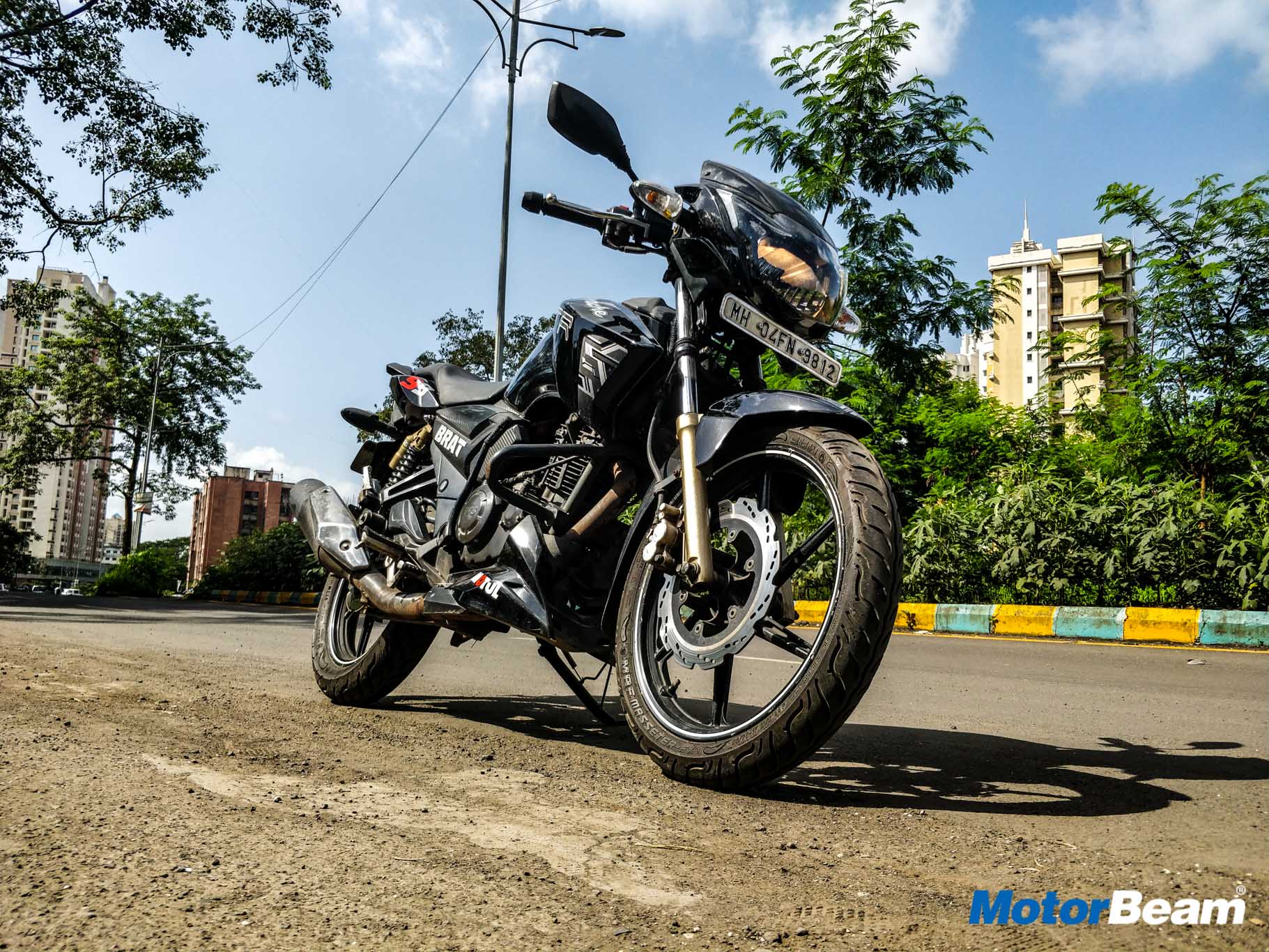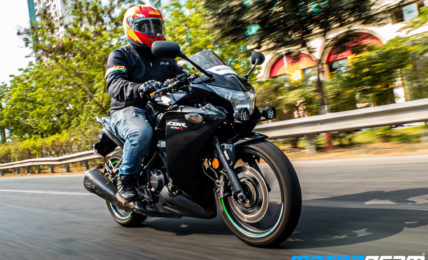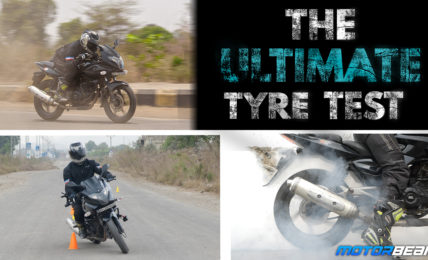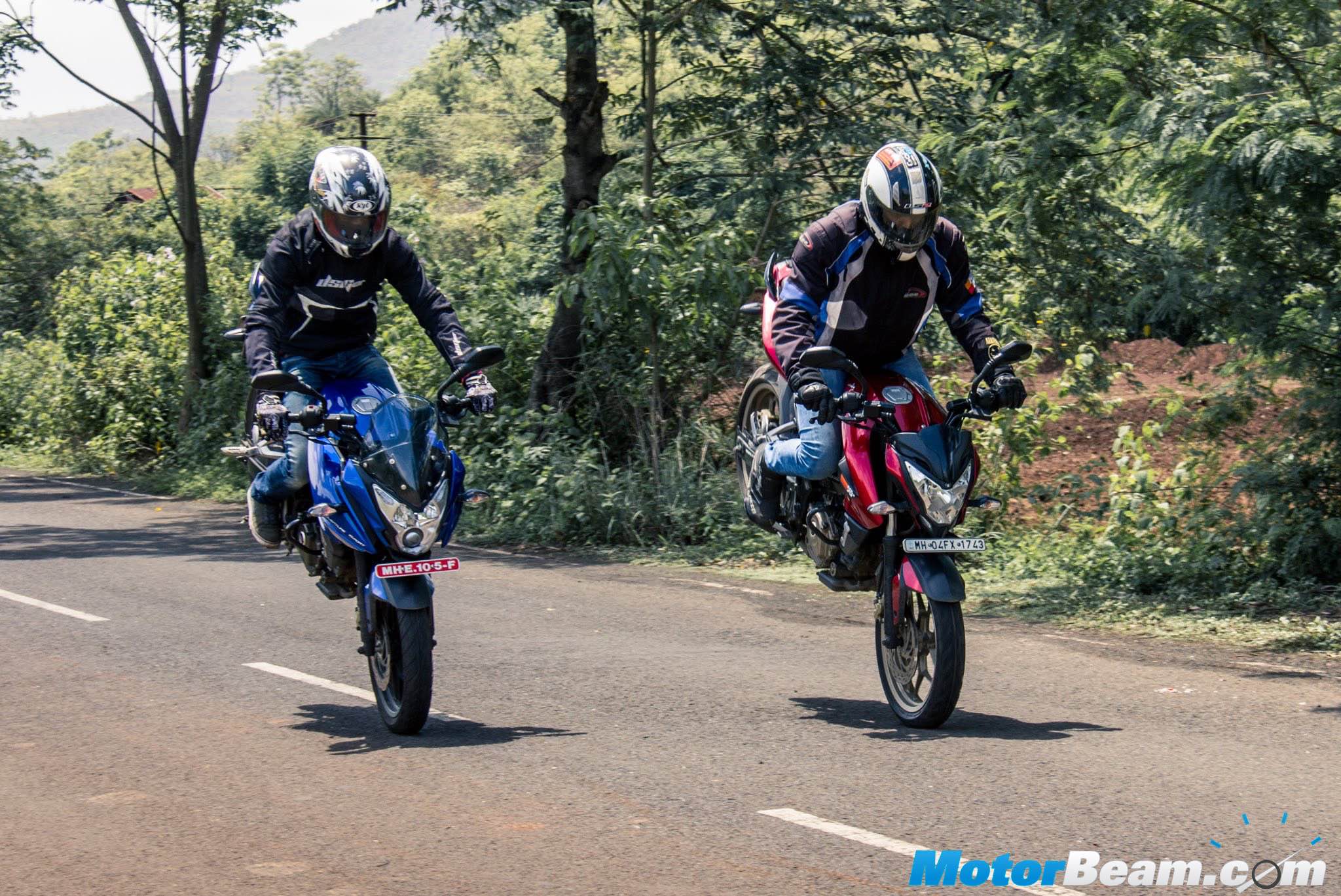
MRF Masseter Tyres Review
The MRF Masseter tyres aim to offer the best of both worlds – grip and practicality
In recent times, the biking community in India has progressed far beyond our imagination, there used to be a time when motorcycles were just meant for commuting and people would just look for fuel efficiency. However, bikes have become a part of our life and more than anything they have become a symbol of who we are. In today’s era, bikes are judged on every factor, from looks to features, comfort to mileage, even price to practicality, etc. One such aspect are the tyres. Tyres are the only link between the bike and the road. They play a major role in how your motorcycle performs and balances. There are different ways to differentiate tyres, i.e. the compound, size and section, level of grip, tread pattern, etc.
The overall look is just like a normal tyre, looks proportionate
The Indian market is crowded with companies competing against each other i.e. to launch a product that would rule the market and one such company is MRF. Established in 1946, MRF is India’s homebred company and one of the largest manufacturers for both two and four wheeler tyres. With companies such as Michelin, Pirelli, Metzelers, CEAT, etc. competing to give the best performance tyres, MRF was out of the game for a while. Recently MRF has rolled out its new born baby known as ‘Masseters’ in the market after putting in 7 years of R&D. Despite the entire market revolving around radials, even MRF did the same last year with the Revz series. But this time, MRF has taken a step down to bias tyres to create the Masseters but is this change really worth it?
Road undulations and different tarmac are a piece of cake to manage
MRF claims that Masseter is by far the most promising product rolled out. These tyres were specialized using L.A.P.S. (Lean Angle Performance System) technology, mainly to ‘RULE EVERY CURVE’ and master superior grip on road in both wet and dry conditions. The key factor about these tyres is that they were designed especially for the twisty lovers. We were called to test the tyres on at the launch in Coimbatore in December 2016. When I got my chance to test the Masseters they blew me up with surprise. The Masseters not only help you maintain a clear line but also give good braking control and improves lean angle.
The tread pattern is similar in all the MRF Masseters
Keeping the Indian weather in mind, they are made of soft compounds, designed with superior tread grooves for water jetting. With all these features under the belt, the MRF Masseters are the perfect cornering tool allowing you to carry more speed and lean angle in corners along with proper control over the vehicle. The Masseters surely did pass our tests and expectations on the track and now the question was how good are they when they’re put to test in the real world?
City roads or cement roads, the grip stays optimum
Compared to the stock TVS tyres, these MRFs offer way better grip
Owning a TVS Apache RTR 180, the bike came with stock TVS tyres, tyres which didn’t even wear after usage of 15,000 kms, the griping of the tyres was nothing more than what was needed for a common man to do his day to day commute. The tyres had an everlasting tread and poor wet grip. Later I upgraded to MRF Nylogrip Zapper which exceeded the TVS tyres in all aspects and also gave the bike a tough look from the rear. Now, it was time to change the rubber again. For the Apache, the Masseters come with 80/80/17 front and 120/80/R17 for the rear. The motorcycle looks more aggressive than ever as the front-end was lower while the rear was beefy with deep grooved rubber.




